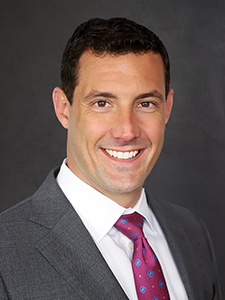How to Prepare for Skilled Nursing Facility Surveys

- Skilled nursing facility surveys require ongoing preparation.
- Government surveys can affect financing.
- When making loans, lenders will look at factors beyond the CMS five-star rating system.
The Centers for Medicare & Medicaid Services (CMS) requires that skilled nursing facilities comply with federal requirements or risk severe penalties. Operators must be ready for the state survey agencies’ (SSAs) on-site inspections. The agencies make these visit approximately every 12 months. Arbor Realty Trust and an attorney with nursing home expertise explain how preparation for surveys can minimize the potential for disruption.
The government tracks deficiencies in resident care. The inspections include looking at accident hazards, residents’ supervision, infection control programs, food storage and preparation, residents’ records, dignity and respect of individuality, and investigations of allegations. The results of skilled nursing facility surveys and enforcements can significantly impact not only operations but also financing. However, with foresight in planning, skilled nursing facilities can improve their operations while also securing financing.
SNF Surveys and Loans
“In most cases, we see facilities being strategically financed by short-term, bridge debt with the end goal of obtaining permanent FHA financing,” explained Tony Ruberg, Managing Director, Senior Housing and Healthcare Finance, at Arbor Realty Trust. The on-site surveys provide information for the CMS five-star rating system. The chart scores all nursing facilities that receive federal funding.
“We’ve seen restrictions on one and two-star facilities and their ability to get financing. We’ve seen requirements that you may not have typically seen in the past as part of both bridge loans and FHA financing,” he said.
 Tony Ruberg, Arbor Realty Trust
Tony Ruberg, Arbor Realty TrustRuberg stated if a facility has had survey issues in the past, HUD or the lender may require the operator to obtain a third-party risk management contract. However, Ruberg emphasized that having survey deficiencies will not preclude obtaining a loan.
Making SNF Surveys Easier
To prepare for skilled nursing facility surveys, it’s essential to keep in mind that they can happen anytime, said Howard Sollins. The leader of law firm Baker Donelson’s long-term care team advises operators to do periodic self-audits. They should not just look at problematic situations. Basic information, such as who is authorized to make healthcare decisions, should be readily apparent from the patient’s chart. Is it the resident or someone acting on the patient’s behalf? This information should be clear and easy to follow.
When SSAs find deficiencies, facilities are legally required to develop a Plan of Correction. The plans set forth curative actions within specific dates. “Skilled nursing facilities should remain updated on self-reports which they provided to the SSAs since the last survey. They should make sure they’re still adhering to earlier Plans of Correction,” Sollins advised.
Enforcements refer to governmental remedies that consider the severity and scope of the problems. With severity, there are four levels of harm: (i) No actual harm with potential for minimal harm (ii) No actual harm with potential for more than minimal harm (iii) Actual harm that is not immediate jeopardy and (iv) Immediate jeopardy to resident health or safety. With scope, there are three levels: (i) Isolated (very limited numbers of people or locations) (ii) Pattern (more than a very limited number of people or locations) and (iii) Widespread (pervasive problems).
 Howard Sollins, Baker Donelson
Howard Sollins, Baker DonelsonThe remedies include steps such as termination of provider agreements, denial of payment for Medicare and Medicaid new admissions, directed Plans of Correction, monetary penalties, transfer of residents and prohibitions on nurse aide training programs. However, the majority of surveys do not typically result in shuttering business doors.
Putting It in Perspective
In April 2019, the U.S. Department of Health & Human Services, Office of Inspector General issued a report on deficiencies in skilled nursing facility surveys. It stated 94% of deficiencies had “less serious” ratings and 6% of deficiencies had “more serious” ratings.
Sollins added although facilities should prepare for surveys with the goal of no deficiencies, no one can guarantee penalties will never happen. But he emphasized, “You can mitigate the risks.” For example, an operator can abate a situation of “immediate jeopardy.” As a result, the penalty may be reduced even if it continues at a lower level until the facility demonstrates substantial compliance.
“Self-identification, self-assessment, self-correction, self-reporting can result in avoidable or mitigated penalties,” said Sollins. Facilities should work to demonstrate past-noncompliance so that the facility is in compliance by the time of the survey on a self-report.
“It’s pretty rare to see a deficiency-free survey,” said Ruberg. “It happens. I’ve seen a few, but typically, they [SSAs] are going to find something. The most important thing is how quickly you react and correct the incidences.”
High Performing Facilities Can Have Deficiencies
Ruberg pointed out that deficiencies have different levels and frequency of harm. A key takeaway is that operators should focus on fixing issues when they arise, and document how they remedied situations.
Numbers and the star-ranking system do not always tell a complete, full story. Ruberg pointed out that the CMS rating system does not account for size comparing, for example, facilities with 100 beds to those with 600 beds. Larger nursing homes will be at risk for higher numbers of deficiencies, having more beds and residents. Also, there is not one objective grading system. Geographical regions differ in the star-ratings. Thus, he noted Arbor looks at an operator’s entire portfolio, not just an individual asset when assessing risk.
Finally, Sollins summed up a problem he sees with skilled nursing facility surveys. “Other healthcare providers have access to accreditation and what’s called ‘deemed status’ in which you’re deemed in compliance if you’re properly accredited. Nursing facilities are scrutinized by the regulatory process in a much more granular way,” he opined. Sollins pointed to a disconnect in healthcare policy trying to bring long-term and post-acute care into the continuum of care with acute care and community-based services. He emphasized skilled nursing facilities have a different survey oversight process compared to other parts of the healthcare delivery system.
“It’s a real handicap for innovation to have such a unique and different approach to the inspection survey and inspection of nursing facilities as compared to other elements in the healthcare delivery system with which they’re expected to align,” he said.
Looking for senior housing and healthcare financing? Find out more about Arbor Realty Trust’s loan programs and contact us today. Stay current with the latest reports and information on multifamily housing and commercial real estate by reading the Arbor blog.

